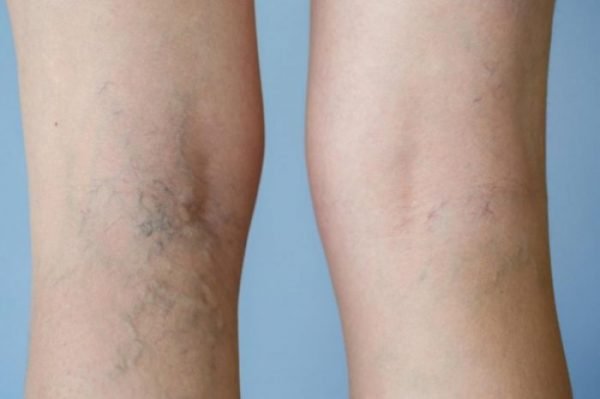ABOUT TUMMY TUCK (ABDOMINOPLASTY)
Abdominoplasty, also referred to as a “tummy tuck”, is a surgical procedure performed to remove excess fat and skin that has lost its elasticity and to create a firmer and more defined abdomen. The procedure is most commonly performed on women who have excess skin from previous pregnancies, or on patients who have lost a lot of weight and want excess skin removed.
The procedure involves creating a large incision beneath the abdomen and removing tissue so that the remaining skin can be pulled tightly together. The procedure is often performed as part of a body lift.
Recommended for
- Stretched abdominal muscles as a result of pregnancy
- Unsightly fat deposits or loose abdominal skin, particularly in patients who have lost a significant amount of weight
TIME REQUIREMENTS
- Number of days in hospital: 1 – 3 days.
- Average length of stay abroad: 1 – 3 weeks.
Many surgeons recommend waiting around 2 weeks before flying, and taking precautions against the risk of deep vein thrombosis (DVT). Patients will need approval from the surgeon before travelling.

COMPARE TUMMY TUCK (ABDOMINOPLASTY) PRICES AROUND THE WORLD
| Country | Cost |
|---|---|
| United Kingdom | 9700€ |
| Spain | 5000€ |
| Costa Rica | 4486€ |
| Thailand | 2671€ |
| Turkey | 2400€ |
| Poland | 1860€ |
| Mexico | 1823€ |
| Hungary | 1670€ |
HOW TO FIND QUALITY TREATMENT ABROAD
BEFORE TUMMY TUCK (ABDOMINOPLASTY) ABROAD
Patients will have an initial consultation with the surgeon to discuss the surgical options and the patient’s desired outcome. Patients who smoke are advised to give up smoking at least 2 weeks before the surgery and to continue this for at least 2 weeks post surgery.
Patients should arrange to have someone to pick them up after surgery and to stay with them for the first night after the surgery.
HOW IS IT PERFORMED
There are two different types of abdominoplasty surgeries which may be performed, a complete abdominoplasty or a partial/mini abdominoplasty.
A complete abdominoplasty involves making two incisions, one at the navel and one across the lower abdomen (bikini line). This surgery may require the navel to be repositioned. Excess skin and tissue are removed and stomach muscles are tightened, using dissolvable sutures. It may be necessary to have a draining tube put into place after the surgery.
A partial/mini abdominoplasty involves making a smaller incision compared to the incision in a complete abdominoplasty. This type of surgery is targeted for patients who have fat deposits below the navel.
Both surgeries often incorporate liposuction as part of the procedure. Once the tightening is complete, the surgeon completes the procedure by closing the incisions with small sutures.
Anesthesia
General anesthetic.
Procedure duration
The Tummy Tuck (Abdominoplasty) takes 2 to 3 hours.

WHAT TO EXPECT AFTER TUMMY TUCK (ABDOMINOPLASTY)
Post procedure care
Patients should relax and recover by avoiding heavy lifting or physical activity. It is common to experience swelling, pain or numbness.
Many tummy tuck procedures require the use of surgical drains, which are inserted into the abdomen to drain fluid. These are usually removed after 1 to 2 weeks, and in this time patients must be careful when showering etc.
Patients will need to take 2 to 6 weeks off work, in order to allow for healing and recovery from the surgery.
IMPORTANT THINGS TO KNOW ABOUT TUMMY TUCK (ABDOMINOPLASTY)
Not recommended for
- Women planning to have more children,
- Patients who can achieve similar results with exercise
- Underlying health conditions
Potential risks
- Infection
- Scarring
- Bruising
- Numbness
- Blood clots
- Adverse reaction to the general anesthetic
FREQUENTLY ASKED QUESTIONS
A tummy tuck is major surgery and, thus, carries some risks. Many patients have a tummy tuck without any major complications, but you should discuss your individual risks with your surgeon. The most significant risks are due to poor healing and can be avoided by following all of your surgeon’s instructions during recovery and ensuring you get adequate post-operative and follow-up care.
Most patients say the results from their tummy tuck were worth it. The surgeon removes a significant amount of excess skin and tightens the abdominal wall, making it much less saggy and improving the visibility of weight-loss achievements. A tummy tuck is not a type of bariatric surgery, and shouldn’t be used to reach weight loss goals, but instead may be part of an overall program that includes diet and exercise, or performed after bariatric surgery to remove excess skin.
An tummy tuck involves the removal of excess skin and fat from the abdominal area that is the result of significant changes in weight. The surgeon will then suture the remaining skin together and close the incisions, pulling the skin tightly over the abdomen. Some fat is removed in the process, and stretch marks that were on the excess skin will be removed.
Although there is some weight loss as a result of abdominoplasty, liposuction may be performed at the same time to remove excess fat from the area.
There will be pain when recovering from a tummy tuck. Your surgeon will prescribe a pain management plan to help control it. The surgeon may place small drainage tubes in the abdomen that may stay in place for up to 2 weeks. It is important to give yourself enough time to fully heal from the surgery to avoid complications afterward, and most surgeons recommend at least 4 weeks. Ask your surgeon how long you will need to stay abroad during your recovery.
Patients are usually not able to walk upright during the first week of recovery. It usually takes up to 4 weeks to return to normal activities, but may take up to 6 weeks to return to exercise. If you have a desk job, you might be able to return after 1 to 2 weeks of recovery, but you should give yourself as much time off as your surgeon recommends. After care is extremely important and there will be several follow-up appointments to monitor the healing process.















